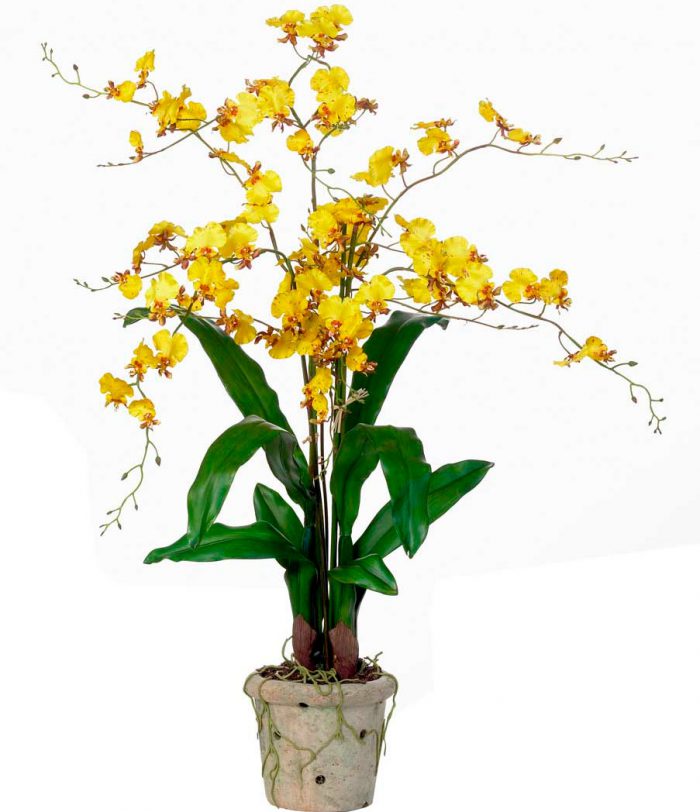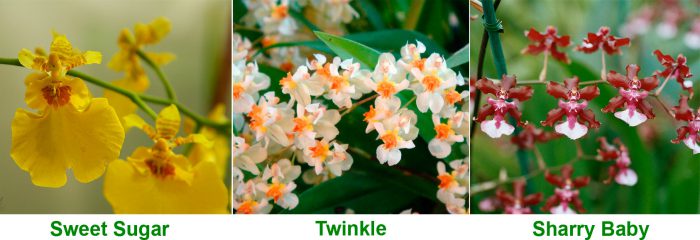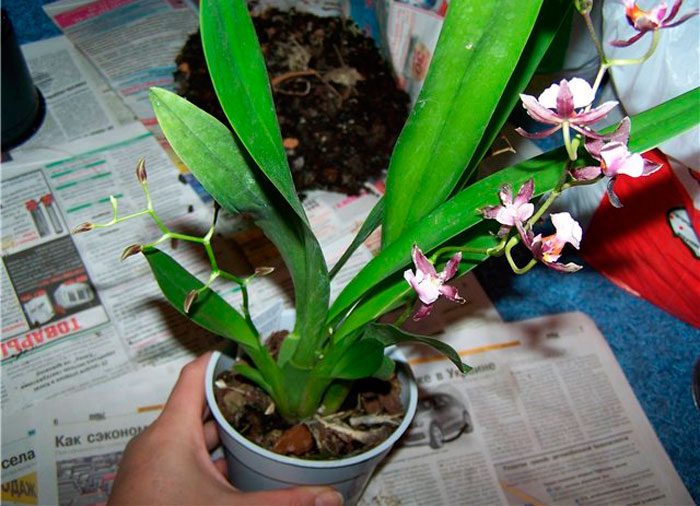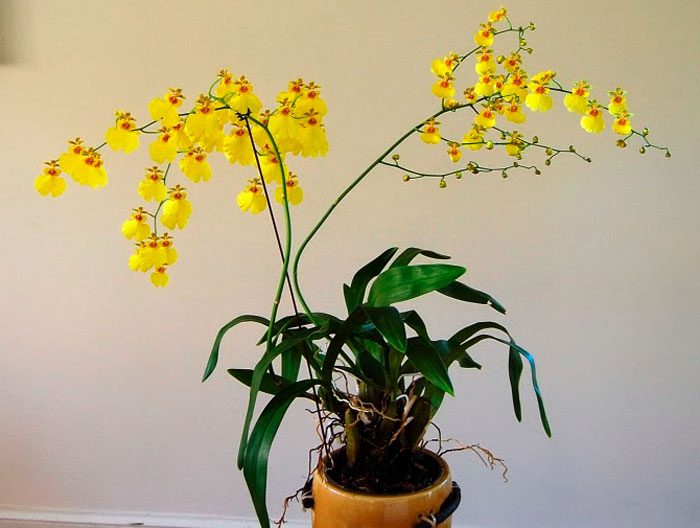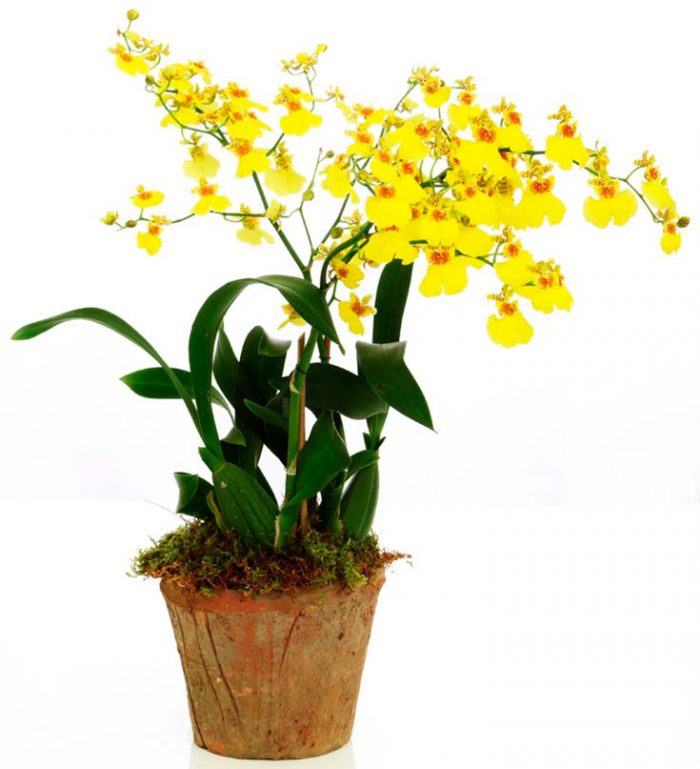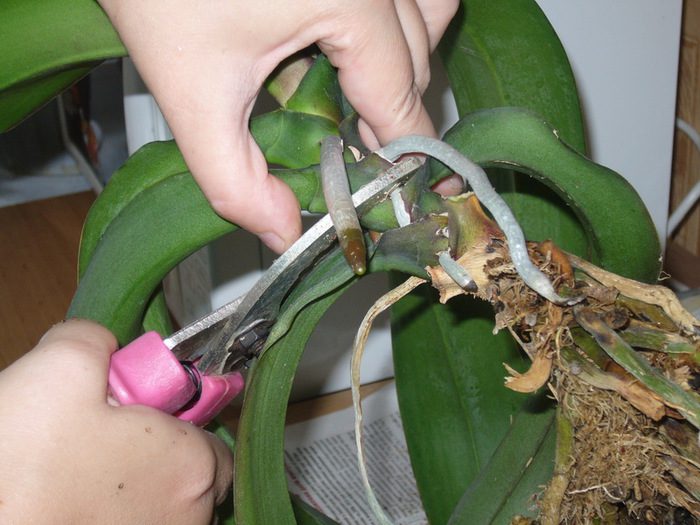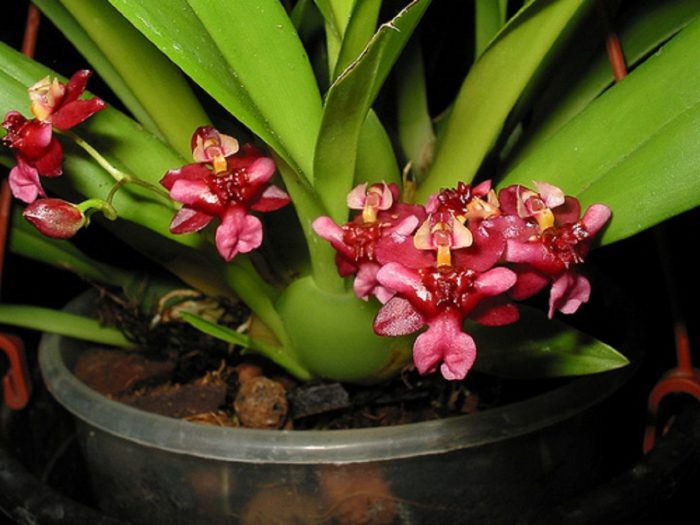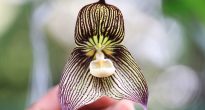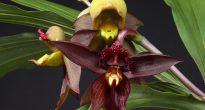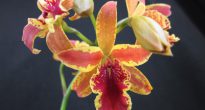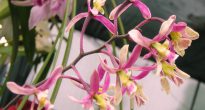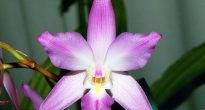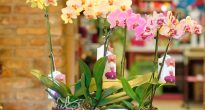The most popular among florists is orchid oncidium (Oncidium). This genus is represented by various plants that differ both in appearance and in growing conditions. So, there are species that prefer to grow in arid savannas, others grow in the warm and humid forests of South and Central America, and there are also those that are found only high in the mountains. In this regard, there are no uniform specific rules for caring for this plant, as well as their hybrids. In each specific case, it is necessary to take into account which parental species a particular hybrid originated from. The most important thing in caring for such orchids is the choice of the correct temperature regime, their drought resistance and the features of the dormant period.
Oncidium is different from phalaenopsis the fact that he is more attached to temperature changes during the day, and also loves light very much. Most of the species of this plant are epiphytes and they are able to live even on a stone. In this regard, they do not tolerate excessive moisture in the root system.
It is worth considering that oncidiums of Dutch origin are for the most part very beautiful hybrids that do not require special conditions for keeping. They are easy enough to grow at home and at the same time they bloom quite effectively. You should also learn more about cambria - this name of hybrid orchids is a general trade name. These hybrids are obtained by crossing a wide variety of species of the oncidium group, as well as oncidiums. Such hybrids are also quite unpretentious.
It is quite easy to distinguish an oncidium hybrid in a flower shop. It has a branched and rather long peduncle, on which there is a large number of small flowers, similar to dancing dolls or moths. As a rule, they are colored brownish yellow or red. The flower has several pseudobulbs that are thickened. And from them are narrow long leaves, which are folded in the shape of a boat. Most often, there are such hybrids on sale as:
- Sweet sugar (Onc. Aloha Iwanaga x Onc. Varicosum) - it is the most popular and distinguished by its unpretentiousness, it has many small yellow flowers;
- Twinkle (Onc. Cheirophorum x Onc. Ornithorhynchum) are compact hybrids, they have small fragrant (up to 15 millimeters) flowers, which, depending on the variety, can be colored yellow, white or red.
- Sharry baby (Onc. Jamie Suttonx Onc. Honolulu) - this series has many small flowers that have a fairly strong smell of chocolate and honey, and depending on the variety, they can have a red, dark purple or brownish yellow color.
In the store, you should opt for a plant that has at least 3 mature pseudobulbs. Only in this case the purchased flower will grow and develop normally. If the oncidium has less than 3 pseudobulbs, then the flowering of such a plant in the store is artificially stimulated, and when grown in room conditions, serious problems often arise with it.If the pseudobulbs are slightly wrinkled, then this is completely normal. When buying, you should also pay attention to the root system. The roots should be light in color. The soil should be slightly moist (not dry or flooded). The root system reacts negatively to stagnant water in the soil, as well as to dryness, which lasts a long time. If there are brownish spots on the foliage, then it is better not to buy such plants.
Content
Caring for the oncidium orchid at home
Transfer
It is recommended to transplant a newly purchased plant only as a last resort, for example, if its root system is rotten (it is better not to buy such a flower at all). Such an orchid reacts extremely negatively to transplants, therefore, this procedure should, if possible, be carried out 1 time in several years, for example, if the substrate has become more like dust, or if an overgrown flower has become cramped in a pot.
For planting, do not use a transparent container, since there is no chlorophyll in the root system and therefore it does not need sunlight. It is best to opt for a low and wide enough pot. In the event that the container is of a standard size, then ½ part of it should be filled with drainage. Then the pot is filled with a new one, the bark of conifers is used as it, and a smaller fraction will be needed than for phalaenopsis. Also, experienced florists recommend adding a small amount of pieces of charcoal, as well as sphagnum moss.
During transplantation, it should be remembered that oncidium is a sympoid plant. Unlike phalaenopsis, which is monopoidal and has only 1 growth point, it has several growth points that share a common rhizome. The growth of young shoots is directed only in one direction. In this regard, it is planted closer to one of the sides of the pot, turning the old pseudobulbs to the wall. This frees up space for young shoots. If there are young shoots during transplanting, they should be turned to the center of the bowl.
In no case should the base of the flower be buried. So, pseudobulbs should not be submerged in the soil and they need good ventilation. During planting, only the root system needs to be buried in the soil. It should be borne in mind that the container must be filled with soil almost to the top, otherwise the orchid will have poor ventilation. You should not cut off old pseudobulbs, since, despite their age, they still feed the flower. You also need to be careful enough to grasp the bases of the pseudobulbs, since when removing the scales on their surface, young sprouts, as well as flower buds, are often damaged.
Lighting
This plant is very light-requiring and tolerates direct sunlight normally. However, it is recommended to shade it from the scorching summer sun. The light level can be adjusted by paying attention to the color of the foliage. So, if it is dark green, then the lighting is too poor. And if the leaves are pale light green and there are small reddish points of burns on their surface, it means that the lighting is too intense. If the illumination level is selected optimally, the foliage will be of normal green color.
If necessary, this plant can be placed on a north-facing window, but in this case you should not expect flowering from it. Oncidium especially needs intense lighting during the formation of young pseudobulbs, as well as during the laying of flower buds. In the event that these processes are observed in winter, it is recommended to provide supplemental lighting with phytolamps.
Temperature regime
Hybrid plants grow normally and develop at a temperature of 14-26 degrees. If the room is too hot, the plant will stop growing. A not too large difference in daily temperatures is recommended (about 3 or 4 degrees).
Humidity
The flower quite normally tolerates not too high humidity in an apartment. The recommended air humidity is approximately 40 percent. It is necessary to moisten the foliage from the sprayer on hot summer days, and also occasionally during the heating season. With a cool wintering (less than 18 degrees), the oncidium is not moistened. Despite the season, the flower needs excellent ventilation. The fact is that fungal diseases can develop in stagnant air with high humidity.
How to water. Bloom
What the bloom will look like depends on how well you water the flower. For the flowering to be sustainable, you must follow the watering regime, which must correspond to the stages of flower development. From the beginning of growth (when a young sprout emerges from the bottom of the pseudobulb) and before the pseudobulb begins to form (the sprout thickens from below), watering should be systematic and abundant. Experts advise watering the plant by immersing the flower pot in warm, well-settled water. Watering is necessary only after the substrate dries well, but the "dry period" should not be too long. How much the soil has dried can be judged by the weight of the container with the flower. You should not water the oncidium strictly according to the schedule, because on hot summer days the soil may well dry out after 3 days, and in a rainy autumn it will take about a crescent.
Immediately after you notice that a new pseudobulb is forming, watering the flower must be stopped, otherwise flowering will not occur. After 3-4 weeks, a peduncle will appear, which grows from the lower part of a new pseudobulb. If you are sure that this is the peduncle, you can start watering the orchid again. After flowering is over and before the new pseudobulb begins to grow, water should be less abundant. In the event that a young vegetative shoot grows, and not a peduncle, then this means that there are problems with the plant. This may be due to disturbances during the dormant period and, as a consequence, improper plant development. This often happens when a flower has less than 3 pseudobulbs and it simply does not have the strength to form a peduncle.
If the plant develops within the normal range, then it blooms once every 8–12 months. If there are a large number of pseudobulbs, then oncidium may bloom more often.
Shriveled pseudobulbs can often be observed. This may not in all cases be associated with diseases or with poor watering. They can shrivel when the young shoot is just starting to grow. Such sprouts do not have their own root system, and therefore the maternal pseudobulb feeds it, as a result of which shrinkage occurs. If you increase watering, then this will only provoke rotting of the root system, but the pseudobulba will not help. Also, the pseudobulb can dry out during the rest period, and also during the flowering process.
Fertilizer
The plant is fed only when young shoots begin to grow. After the beginning of the formation of pseudobulbs, fertilization is stopped. It is necessary to resume feeding only after the peduncle begins to grow and finish after the disclosure of the 1st flower. Then feeding begins only after the start of the growth of the young shoot. The root system reacts negatively to soil salinity. In this regard, the concentration of fertilizers must be reduced. And also sometimes you need to fertilize the foliage, for this you need to moisten it with a weak solution of fertilizer from a sprayer. At the same time, it is recommended to lower the fertilizer concentration 10 times from the dosage recommended on the package.
Reproduction methods
In indoor conditions, such an orchid can only be propagated vegetatively by dividing the curtain. You can divide a plant only if it has at least 6 pseudobulbs. In this case, each delenki must have at least 3 sprouts (only such delenki are viable). An underground shoot is cut with a very sharp knife, and then the resulting cut is cut with chopped charcoal. Before proceeding with division, it is necessary to allow the soil to dry completely, and after this procedure, watering is not carried out for another 1-1.5 weeks. During this time, the wound should dry out.
Pests and diseases
The purchased oncidium must be quarantined for 4 weeks, it must be monitored.
Often gets turned on mealybug... If on the surface of the foliage you notice whitish lumps, very similar to cotton wool, then treatment should be carried out. To do this, moisten a cotton pad with alcohol and carefully remove insects. After that, carry out the treatment with Aktar.
Can also settle shield... On the surface of foliage and shoots, plaques appear, similar to wax droplets. Thrips and aphids can also settle. In this case, aphids can be seen with the naked eye, and thrips are quite difficult to detect, and infection can be judged by the appearance of silvery stripes on the surface of the foliage, as well as by black dots that are insect excrement.
In the presence of spider mite whitish dots form and cobwebs appear. And also a flat mite often settles, the leaves in this case change color to whitish-silver. A bulb mite can infect the root system and the base of the shoots of weakened specimens. Any type of mite is fought in the same way as with a spider mite.
Can become infected with fungal and bacterial rot. If brownish spots appear on the foliage, then the affected areas must be removed. Such a plant needs very good ventilation; between waterings, the soil should almost completely dry out. And such a flower should be placed in a warmer place, and you should also not shower and spray the foliage. Treat with systemic fungicides (foundationol, while following the instructions), as well as a broad-spectrum antibiotic (Tetracycline, diluted with water in a 1: 2 ratio). The plant is sprayed with the resulting solution and watered with the soil. A fully recovered flower should not have new spots for a long time, while old ones should not grow.
Video review
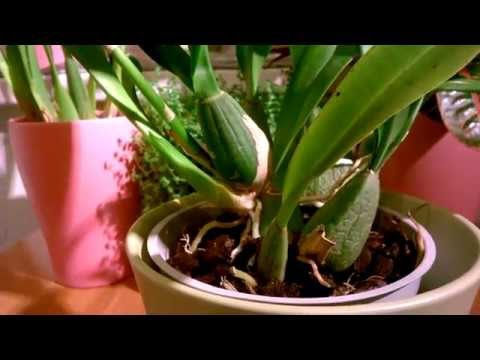

Watch this video on YouTube

